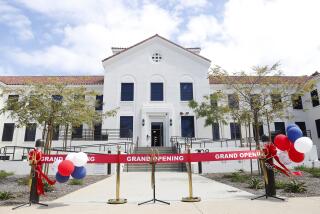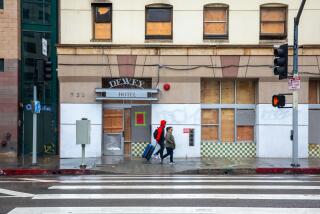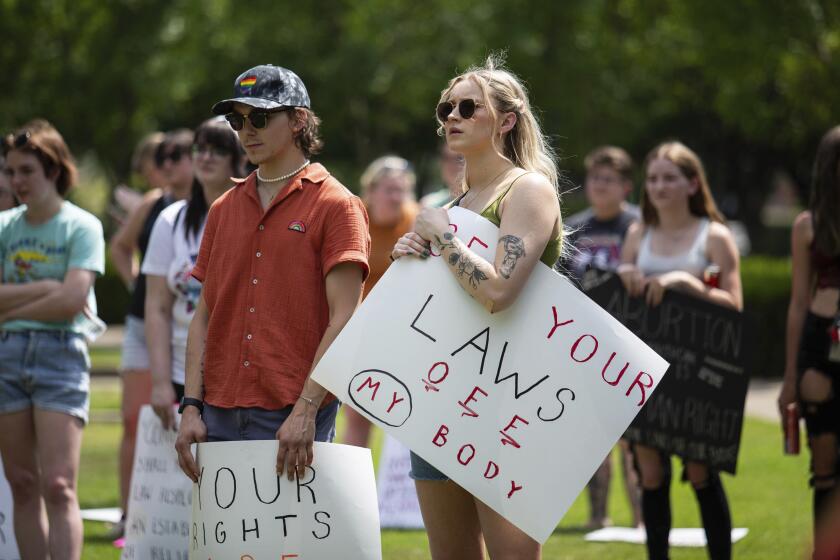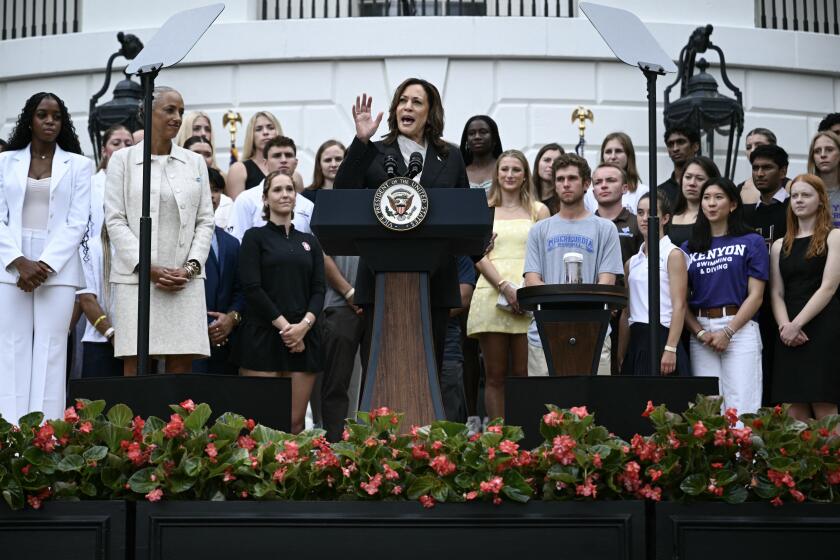Editorial: Let’s get this housing for homeless veterans built already
The master plan to revitalize the campus of the West Los Angeles Veterans Affairs was formally adopted at a sun-dappled ceremony flush with political leaders, veterans and the advocates who had fought tenaciously for that moment. Finally, there was a plan in place to transform the campus from an uninviting island of decaying buildings and sterile medical facilities into a gathering center for veterans and the future site of 1,200 units of permanent supportive housing for chronically homeless vets.
That was nearly a year and a half ago. So how are things going? Sluggishly, in some ways. Encouragingly in others.
It’s understandable that this project will take years to complete — that’s calculated into the master plan. It is a colossal undertaking to remake a 388-acre campus. The VA did not even receive the necessary congressional authority to enter into leases with developers and service providers until September.
The problem is, there really is no new development yet. And now the VA says the first phase of 480 units will take four years to install, not 2½.
Despite intensive efforts to reduce veterans homelessness in recent years, last year’s homeless count tallied about 3,000 vets still on the streets.
Only one building is soon to open — probably next month — with space for just 54 chronically homeless veterans. And that building had already been renovated into housing. VA officials have requested proposals for major renovations at two nearby buildings; if all goes well, the total number of supportive housing units will reach 150 within two years — a fraction of the total needed.
Meanwhile, the VA didn’t hire consultants to implement the master plan and conduct a lengthy environmental study until almost a year after the plan was adopted. The study is expected to take two years. Until it’s done, construction can’t begin on the 150 units planned for MacArthur Field.
VA officials say they needed to make sure they were getting congressional authority to enter into leases before they started the environmental review of the campus. It may have seemed prudent to wait, given that Congress had halted the leases in the first place. But the accumulation of delays holding back the master plan’s implementation is disturbing. It’s not as if the VA has an abundance of time to act; despite intensive efforts to reduce veterans homelessness in recent years, last year’s homeless count tallied about 3,000 vets still on the streets in L.A. County.
The master plan was born out of a settlement between the VA and a group of homeless veterans who sued the VA over the misuse of the grounds. That settlement obligates the VA to consult with a nonprofit group called Vets Advocacy on the implementation of the master plan. On its board sit high-powered lawyers and civic activists who led the fight to get veterans housing on the campus. Some board members see the VA’s efforts so far as lethargic and believe they have not been sufficiently included in the process.
The veterans’ advocates want a real estate visionary to implement this plan with more alacrity. The VA officials say they are just being meticulous.
In fact, both vision and care are necessary. Of course, the VA officials should be meticulous. But they need to be more nimble and faster or else they’ll never get ahead of the insidious problem of veteran homelessness. They should enlist the help of Vets Advocacy, which has dedicated so much of its energy and brainpower to this plan.
On the encouraging side of this issue, the VA is now following a housing-first model, meaning that homeless veterans are housed first and then helped with the mental issues or addictions that kept them on the streets. And the first housing project to open will have a respected nonprofit organization, Step Up on Second, providing the wraparound services for veterans. In addition, a legal clinic and a family “well-being” center, both operated by UCLA for veterans, are opening on the campus. These are important enhancements.
Sadly, one important thing missing from this project is the voice of new Secretary of Veterans Affairs David Shulkin. It was former VA Secretary Robert McDonald who ended the court battling between the vets and the VA, and started the process toward the master plan. His support and attention sparked action at the local level. Now he’s gone. We have yet to hear publicly from Shulkin on this master plan. He needs to make his commitment to it clear and then do everything within his power to facilitate it.
Follow the Opinion section on Twitter @latimesopinion or Facebook
More to Read
A cure for the common opinion
Get thought-provoking perspectives with our weekly newsletter.
You may occasionally receive promotional content from the Los Angeles Times.






